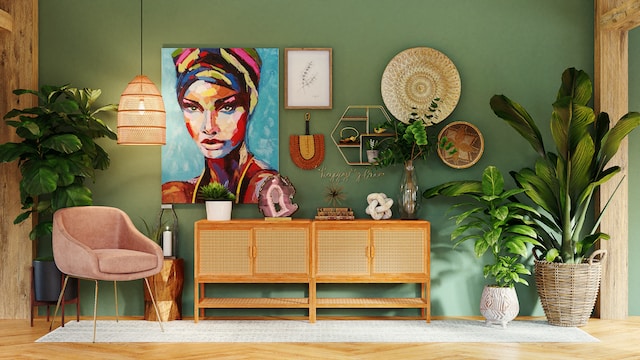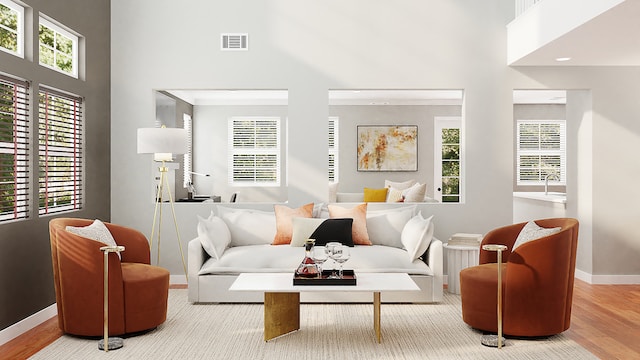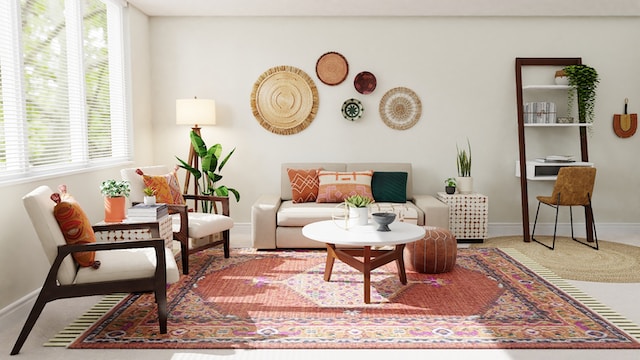Alt-tag: Large and bright living room as an example of creating a stylish and harmonious interior
Creating a stylish and harmonious interior is not merely about following the latest trends or impressing guests; it’s an essential element that reflects our personalities and greatly impacts our emotional well-being. A well-designed space speaks to who we are and what we love. But how do we craft such an environment? To help you do this, we did thorough research with our friends from a reputable interior design blog, and here’s a guide to help you master the art of crafting a space that’s uniquely you.
Table of Contents
The Heart of Your Home: Reflecting Who You Are
Your living environment is more than bricks and mortar; it’s a profound expression of who you are and a sanctuary that nurtures your soul. Creating a stylish and harmonious interior is a delicate art that goes beyond mere decoration to encapsulate your values, passions, and unique essence.

How you design your space profoundly influences your well-being, comfort, and daily experiences. A home that resonates with your personality becomes more than just a dwelling; it turns into a place where you can thrive. So let’s explore how to craft such a space with seven insightful tips to connect your interior surroundings with the core of who you are.
Tip 1: Choose Colors Wisely
Colors can breathe life into a space, influencing the aesthetics and the feelings they evoke. Think beyond simple paint, and consider textiles, art, and accessories as part of your color scheme. From vibrant reds to soothing blues, each hue has its unique energy.
Experiment with different shades and textures, understanding how they interact with natural and artificial light. Consider employing a feature wall or using color blocking to highlight areas of the room. Remember, your chosen colors should resonate with your style, fostering a cohesive look that feels right to you.
Tip 2: Invest in Quality Furniture
Investing in furniture is about choosing pieces that will last in quality and style. Look for timeless designs that complement your space and speak to your taste. Consider not only the appearance but also the comfort and functionality.
Analyze the flow of your rooms and select furniture that fits the proportions, avoiding oversized pieces in small rooms or undersized ones in large spaces. Mixing materials, textures, and lines can also create visual interest, so don’t hesitate to explore different styles as long as they fit into your overall design.
Tip 3: Focus on Flexibility and Adaptability
Moving into a new home fills the experience with opportunities and challenges. The key is focusing on flexibility and adaptability as you start this fresh chapter. As you begin unpacking and settling into your new home, consider how each room’s function might evolve. Modular furniture, adjustable lighting, and versatile storage solutions can make it easier to adapt spaces as your needs change.
Embrace the process of experimentation, recognizing that it might take some time to find the perfect setup. By infusing new life in your new place through innovative design choices that accommodate life’s ever-changing landscape, you’ll be well on your way to creating a home that’s truly yours, reflecting both your current needs and future aspirations.
Tip 4: Embrace Art and Personal Accessories
Art and accessories turn a house into a home. Therefore incorporate elements that reflect your personality, experiences, and passions and explore unconventional art ideas for your home. These touches add depth and meaning to your space, from family photographs to your favorite paintings.

Also, consider creating themed corners or gallery walls that showcase your interests or travels. Don’t forget about textures like rugs, cushions, or curtains, which can add warmth and elegance. Remember, these personal touches should create a harmony that resonates with your overall design.
Tip 5: Don’t Overcrowd Spaces
Space management is essential in crafting an inviting environment. Overcrowding not only clutters the visual field but can hinder functionality. Create clear paths, allow for conversation areas, and consider the flow from one room to another.
Use multipurpose furniture or storage solutions that maintain a clean and orderly appearance. Explore different layouts, understanding the spatial dynamics of your home. Emphasize openness, balance, and proportion, allowing each design element to have its place, thus creating a serene and harmonious atmosphere.
Tip 6: Integrate Nature
Nature’s touch has a unique ability to add warmth and liveliness to your interiors. From potted plants to natural materials like wood and stone, these elements can create a soothing ambiance. Consider the layout and environment of your space to choose plants that will thrive.
Incorporate nature-themed artwork or utilize natural fibers in furniture or textiles. Consider how natural light plays into your design, possibly through large windows or skylights. These connections to nature can create an oasis in your home, aligning with the latest interior design trends and timeless appeal.
Tip 7: Experiment with Lighting
Lighting is more than mere illumination; it’s a tool to shape the mood and highlight the design elements of your space. Layer different light sources, such as ambient, task, and accent lighting, to create a rich and versatile environment. Consider the functionality of each room, adjusting the lighting accordingly—for instance, bright task lighting in a kitchen or soft ambient lighting in a bedroom.

Also, don’t overlook the impact of light fixtures, as they can be art pieces that enhance your décor. From classic chandeliers to contemporary pendants, your choice of lighting should be an integrated part of your overall design strategy, adding functionality and aesthetic appeal.
Tip 8: Plan for Growth and Evolving Needs
Designing your space is not just about the present but also about considering how your needs might change in the future. Think about how your family may grow or how your lifestyle may evolve. Are you planning to work from home more often? Maybe a dedicated home office would be beneficial. A flexible guest room will be a thoughtful addition if you expect frequent guests.
Designing spaces that can adapt and grow with you ensures your home remains functional and comfortable for years. This forward-thinking approach avoids costly or disruptive changes down the road and ensures that your living space remains a reflection of your life’s journey.
Tip 9: Consider Sustainability and Environmental Impact
In an age where sustainability matters more than ever, considering the environmental impact of your interior design choices can be ethical and aesthetically pleasing. There are myriad ways to make your home more eco-friendly, from using reclaimed or responsibly sourced materials to investing in energy-efficient appliances. Opting for natural materials like bamboo or wool, supporting local artisans, and choosing furniture from recycled or renewable resources can all contribute to a stylish yet conscious living space.
Even small choices, like LED lighting or low-VOC paint, can significantly make a difference. By aligning your design with your values, you create a harmonious interior and contribute positively to the broader environment. Sustainability doesn’t mean compromising style; it’s about creating a thoughtful and responsible home that reflects a deeper connection to the world around you.
Tip 10: Incorporate Technology Thoughtfully
In today’s connected world, technology plays a significant role in our daily lives, and you can harness it to enhance your living experience. Consider integrating smart home technology that aligns with your lifestyle and adds convenience without sacrificing aesthetics. Whether it’s intelligent lighting systems that allow you to adjust the ambiance with a swipe or smart thermostats that learn your preferences, technology can be a powerful tool in creating a stylish interior.

However, be mindful of how technology fits into your design scheme, ensuring it complements rather than dominates your space. Thoughtful incorporation of technology can create an environment that is modern, innovative but also comfortable and personal, seamlessly blending with your unique design vision.
Crafting Your Haven: A Guide’s End
Creating a stylish and harmonious interior is about more than selecting the right colors or furniture; it’s a complex and rewarding journey leading to a personal sanctuary. It’s about understanding yourself, your needs, and your values and then translating them into a space that resonates with who you are.
This pursuit of harmony within your living environment is not a one-size-fits-all formula but a continual exploration of balance, comfort, and authenticity. Remember – your home is more than a shelter; it reflects who you are and is a significant factor in your overall well-being. So embrace these tips and watch your space transform into a personal haven tailored uniquely to you.
Meta Description:
Discover the art of creating a stylish and harmonious interior with our comprehensive guide and craft a space that reflects your essence.
